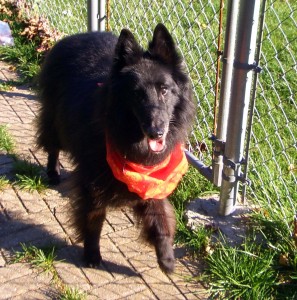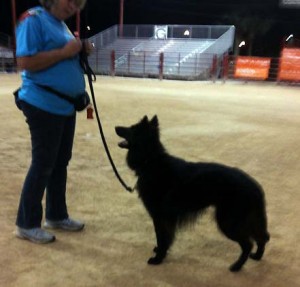 The BSDRT can always use more volunteers but our most critical need is for more foster homes. If you find yourself asking the question stated in the title above, you might be on the verge of volunteering but you just want more information. No one wants to volunteer for a job and then find themselves stuck with a commitment they don’t want. Perhaps we can give you enough information to allay your fears and encourage you to jump in with, not just both feet, but with your head and heart too. Much of the information below is taken directly form the Policies and Procedures of the BSDRT and is indicated in quotation marks.
The BSDRT can always use more volunteers but our most critical need is for more foster homes. If you find yourself asking the question stated in the title above, you might be on the verge of volunteering but you just want more information. No one wants to volunteer for a job and then find themselves stuck with a commitment they don’t want. Perhaps we can give you enough information to allay your fears and encourage you to jump in with, not just both feet, but with your head and heart too. Much of the information below is taken directly form the Policies and Procedures of the BSDRT and is indicated in quotation marks.
As you read this brief description, please know that no foster home is fostering alone. The BSDRT co chairs and regional coordinators will be right by your side, all the way. We will work with you on every detail as needed and be there for the rough times, if there are any. If the dog does not work out in your household, we will move the dog the moment we can find another foster. We are flexible and know that what is appropriate for one dog, may not work for another. Very little is carved in stone. At the risk of being trite, rescuing really does take a village. We need you!!!!
The Foster Application Process
First, a prospective applicant goes to our web site and submits a volunteer form indicating they would like to foster. When they are needed to foster a dog, they will have a phone interview and then they will have a home check by a BSDRT volunteer. Someone will also check their references. The volunteer will be looking at exactly the same things as would a breeder who is looking at a potential puppy buyer. If the person doing a home check would not leave their own dog with the foster applicant, then the BSDRT would not place a rescue dog with them either. Details about the home check are also on our web site, in the policy manual. Once the foster applicant survives the home check as well as a reference check, they will complete a foster contract. Finally, the dog will be placed with them.
The Purpose of Fostering
What does the foster home do with the dog? “Foster care is a critical aspect of rescue. During this time period, the dog is, evaluated, trained, nursed, socialized and prepared to enter a new family. The purpose of foster care is to ease the transition of an abused/neglected animal into that of a devoted family companion.” Foster care is far more than just providing a nice temporary home while the BSDRT team searches for a permanent home.
The Evaluation
“All foster homes should be advised prior to accepting a dog that they will be asked to make a determination on the dog’s suitability for adoption. Should a dog prove not to be adoptable for a myriad of reasons, the foster home will be required to euthanize the dog.” Dogs coming in to a foster have already had a brief temperament evaluation either by the shelter personnel where the dog is found or by the owner if the dog is an owner surrender. That assessment is very brief but hopefully will determine its general temperament, if the dog is a biter, has a bite history or is aggressive to other dogs or people. The BSDRT is not allowed to take in dogs with dog-dog or dog-human aggression issues. In addition, the foster home is asked to do an on going evaluation of the dog for about three weeks to determine the dog’s needs and its suitability for adoption.
The Evaluation Coupled with the Preparation for Adoption
” The best situation is for the dog to be housed in a foster home with someone that can evaluate the dog’s personality traits and household manners.” The dog should be exposed to a variety of situations, including ample time loose in the house, outdoors in a kennel run, public exposure, and crate time. Often valuable information can be gathered during foster care that will help match the dog with a successful permanent home.” Not everyone has a kennel run, not everyone can have a dog loose in their home or even wants to, but the general idea is to expose the dog to various every day situations and to note its reactions. This does not have to be every minute of every day, but should be done over time, calmly and slowly and in a natural manner, as the dog adjusts to its new surrounds and begins to reveal its real personality. Many of our dogs come with baggage and this baggage must be considered and integrated into the evaluation. It is extremely rare and unlikely that a dog already in foster care has to be euthanized. Hopefully a dog with such serious behavioral issues has already been excluded from our program. But it can happen. However, we know our rescues are not perfect and some have special needs and require special homes. We want to work with these dogs too and euthanasia is a very last ditch option.
Preparation Continues
 Sometimes the evaluation reveals a need for further training. A foster home is then asked by the BSDRT to take a dog through the very basic AKC Canine Good Citizen class (CGC), or even a beginner’s obedience program paid for the BSDRT. Some rescue dogs need extra socialization and the foster is asked to spend time socializing the dog. In a nut shell, a foster home needs to prepare a dog for adoption into a pet home and is asked to do whatever it takes to make a dog in to a good pet for an average family.
Sometimes the evaluation reveals a need for further training. A foster home is then asked by the BSDRT to take a dog through the very basic AKC Canine Good Citizen class (CGC), or even a beginner’s obedience program paid for the BSDRT. Some rescue dogs need extra socialization and the foster is asked to spend time socializing the dog. In a nut shell, a foster home needs to prepare a dog for adoption into a pet home and is asked to do whatever it takes to make a dog in to a good pet for an average family.
Another critical duty of a foster home is to seek appropriate medical care when needed, especially shots. Medical expenses are covered by the BSDRT and the first $250.00 can be spent without prior approval. A foster may have to nurse a dog through a spay or neuter and even through the tough heartworm protocol- see the Thelma and Louise article. We also microchip all of our dogs. The foster will be reimbursed for all emergency expenses, prescription food. Regular dog food, toys, treats and general dog supplies are not reimbursable.
Selecting a Permanent Home
When the foster home, the regional coordinator and co chairs agree that a dog is ready for adoption, all the adoption applications are reviewed. The applicants who appear to be possible matches for the particular dog are interviewed by either a co chair or the regional coordinator. After the interviews, the applicants who are best matches are given to the foster home, who does yet another interview. The foster plays a very large role in selecting an adoptive home as they know the dog best. The final adoptive home is selected based on the needs of the dog, not on any obligation on our part to find a dog for an applicant. We are not here to find dogs for people; we are here to find homes for our dogs. This is the only perspective from which the BSDRT operates.
Depending on the situation, the foster may also be asked to introduce the dog to the applicant to help ensure that the match is a good one. They may also need to be available to answer questions while the dog and adoptive home adjust to each other.
Every case is different, but being a foster usually involves a little time and is more than just providing food and shelter while an adoptive home is found. Fostering is a hard job but a very rewarding one. It can heartbreaking when it is time for the foster to let a dog go to its forever home. Some fosters fall in love and turn into adopters, which makes for an unexpected success story! But it is also very rewarding to know that you have played such an important role in redirecting a dog’s life and helping to send them on their way to a happy new beginning.
 Please consider fostering a Belgian in need and experience the joy and satisfaction from a job well done.
Please consider fostering a Belgian in need and experience the joy and satisfaction from a job well done.
